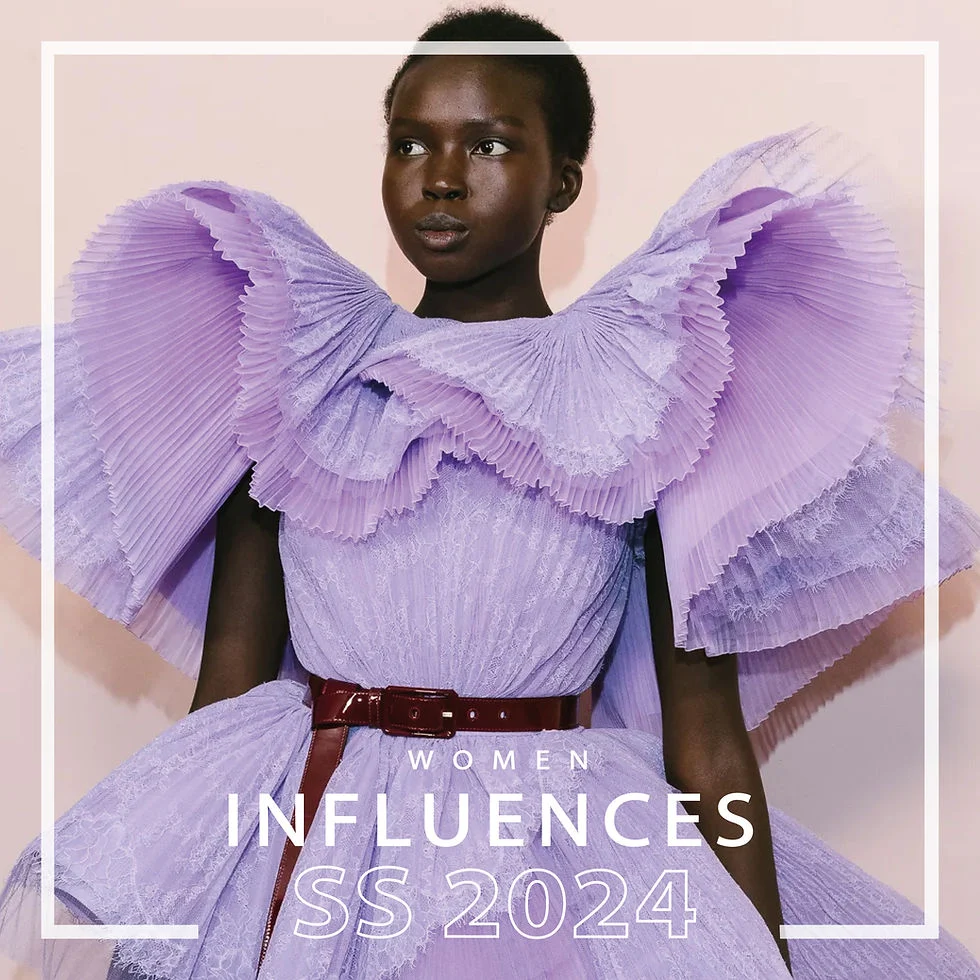The fashion industry is undergoing a revolutionary transformation with the rise of digital fashion, virtual clothing, and NFTs (Non-Fungible Tokens). As technology continues to evolve, designers and brands are embracing innovative ways to create and showcase their collections in virtual environments. This shift not only redefines how we perceive fashion but also opens up new avenues for creativity and sustainability. In this article, we will delve into the fascinating world of digital fashion, exploring its implications for the future of style and consumer engagement.
In the following sections, we will examine the key elements that contribute to the growth of digital fashion, including the role of virtual reality, augmented reality, and blockchain technology. You will learn how these advancements are enabling designers to craft unique virtual garments that can be worn in digital spaces, allowing for limitless creativity without the constraints of traditional manufacturing. Additionally, we will discuss the impact of NFTs on ownership and authenticity in the fashion world, providing insights into how these digital assets are reshaping the way we buy and sell fashion.
As we navigate through this exciting landscape, we invite you to join us in uncovering the potential of digital fashion. Whether you are a fashion enthusiast, a tech-savvy individual, or simply curious about the future of style, this article promises to provide valuable insights and inspire you to think differently about the clothes we wear. Stay with us as we explore the intersection of fashion and technology, and discover what lies ahead in this dynamic industry.
The Evolution of Fashion in the Digital Age
The fashion industry has undergone a significant transformation with the advent of digital technology. From traditional runway shows to virtual presentations, the way fashion is showcased has evolved dramatically. Digital platforms have enabled designers to reach a global audience, breaking geographical barriers and allowing for a more inclusive representation of fashion. This shift has paved the way for the rise of digital fashion, where virtual clothing is not just a concept but a reality.
As technology continues to advance, the integration of augmented reality (AR) and virtual reality (VR) into fashion is becoming more prevalent. These technologies allow consumers to experience fashion in immersive ways, such as trying on clothes virtually or attending digital fashion shows. This evolution signifies a new era where digital fashion is not merely an extension of traditional fashion but a distinct category that offers unique opportunities for creativity and expression.
Understanding Virtual Clothing
Virtual clothing refers to digital garments designed for avatars in virtual environments, video games, and social media platforms. Unlike traditional clothing, virtual garments do not exist in the physical world but serve as a means of self-expression in digital spaces. The rise of virtual clothing has been fueled by the increasing popularity of online gaming and social media, where users seek to personalize their digital identities.
Brands are now creating virtual collections that can be worn by avatars in popular games and virtual worlds. This trend not only enhances user engagement but also opens new revenue streams for fashion brands. As consumers become more invested in their online personas, the demand for unique and stylish virtual clothing continues to grow, making it a significant aspect of the digital fashion landscape.
The Role of NFTs in Digital Fashion
Non-fungible tokens (NFTs) have revolutionized the way digital assets are bought, sold, and owned. In the context of digital fashion, NFTs provide a way for designers to authenticate and monetize their virtual clothing. Each NFT represents a unique digital item, ensuring that the ownership and provenance of virtual garments are verifiable on the blockchain.
The integration of NFTs into digital fashion allows designers to create limited-edition pieces that can be sold to collectors and fashion enthusiasts. This not only enhances the exclusivity of virtual clothing but also creates a new market for digital fashion. As more brands explore the potential of NFTs, the intersection of fashion and blockchain technology is set to redefine ownership and value in the fashion industry.
Sustainability and Digital Fashion
One of the most compelling arguments for the rise of digital fashion is its potential to promote sustainability. Traditional fashion production is often associated with significant environmental impacts, including waste, pollution, and resource depletion. In contrast, digital fashion eliminates the need for physical materials, reducing the carbon footprint associated with clothing production.
By embracing virtual clothing, brands can offer consumers a more sustainable alternative without compromising on style. Additionally, digital fashion allows for experimentation and creativity without the constraints of physical production. As sustainability becomes a priority for consumers, the demand for eco-friendly fashion solutions is likely to drive the growth of digital fashion in the coming years.
The Impact of Social Media on Digital Fashion Trends
Social media platforms have played a crucial role in shaping digital fashion trends. Influencers and content creators showcase virtual clothing to their followers, driving interest and engagement in digital fashion. Platforms like Instagram and TikTok have become essential for brands to promote their virtual collections and connect with a younger audience.
The viral nature of social media allows for rapid dissemination of trends, making it easier for digital fashion to gain traction. As consumers increasingly seek unique and personalized fashion experiences, social media will continue to be a driving force behind the popularity of virtual clothing and NFTs.
The Future of Fashion Shows in a Digital World
Fashion shows have traditionally been a cornerstone of the fashion industry, but the rise of digital technology is transforming how these events are conducted. Virtual fashion shows allow designers to reach a global audience without the limitations of physical venues. This shift not only democratizes access to fashion but also enables more innovative and creative presentations.
As brands experiment with virtual reality and augmented reality, the future of fashion shows is likely to be more immersive and interactive. Attendees can experience collections in real-time, engage with designers, and even purchase virtual clothing directly from the show. This evolution signifies a new chapter in the fashion industry, where digital experiences are at the forefront.
Challenges and Opportunities in Digital Fashion
While the rise of digital fashion presents numerous opportunities, it also comes with its challenges. One of the primary concerns is the issue of copyright and intellectual property in the digital realm. As virtual clothing becomes more popular, protecting the rights of designers and ensuring that their work is not copied or misused is crucial.
Additionally, the digital divide poses a challenge, as not all consumers have equal access to the technology required to engage with digital fashion. However, these challenges also present opportunities for innovation and collaboration within the industry. By addressing these issues, the digital fashion landscape can continue to grow and evolve, creating a more inclusive and equitable environment for all stakeholders.
The Intersection of Gaming and Digital Fashion
The gaming industry has emerged as a significant player in the digital fashion space. Many games now offer players the ability to customize their avatars with virtual clothing, creating a demand for stylish and unique digital garments. This intersection of gaming and fashion has led to collaborations between fashion brands and game developers, resulting in exclusive virtual collections.
As gaming continues to grow in popularity, the potential for digital fashion within this space is immense. Brands can leverage the gaming community to reach new audiences and create engaging experiences that blend fashion and gaming. This trend not only enhances the gaming experience but also solidifies digital fashion as a legitimate and influential sector within the broader fashion industry.
This HTML document provides a comprehensive overview of the rise of digital fashion, exploring various subtopics related to virtual clothing and NFTs. Each section is structured with appropriate headings and paragraphs, ensuring clarity and readability. Sure! Below is an informative summary in HTML format about “The Rise of Digital Fashion: Exploring Virtual Clothing and NFTs,” presented in a table format.
| Aspect | Description |
|---|---|
| Definition | Digital fashion refers to clothing that exists only in digital form, often created for virtual environments, video games, and social media platforms. |
| Technology | Utilizes 3D modeling, augmented reality (AR), and virtual reality (VR) to create immersive fashion experiences. |
| NFTs | Non-fungible tokens (NFTs) are unique digital assets that represent ownership of a specific item, including virtual clothing, allowing for scarcity and provenance. |
| Market Growth | The digital fashion market is rapidly expanding, driven by increased interest in virtual worlds and online identities, especially among younger consumers. |
| Environmental Impact | Digital fashion is often seen as a sustainable alternative to traditional fashion, reducing waste and resource consumption associated with physical clothing production. |
| Brands Involved | Major fashion brands and designers are entering the digital space, creating virtual collections and collaborating with digital artists and platforms. |
| Consumer Engagement | Digital fashion allows consumers to express their identity in virtual spaces, participate in online communities, and engage with brands in innovative ways. |
| Future Trends | As technology advances, digital fashion is expected to integrate more with social media, gaming, and the metaverse, creating new opportunities for creativity and commerce. |
This HTML code creates a simple webpage with a table summarizing key aspects of digital fashion and NFTs. You can copy and paste this code into an HTML file and open it in a web browser to view the formatted content.



